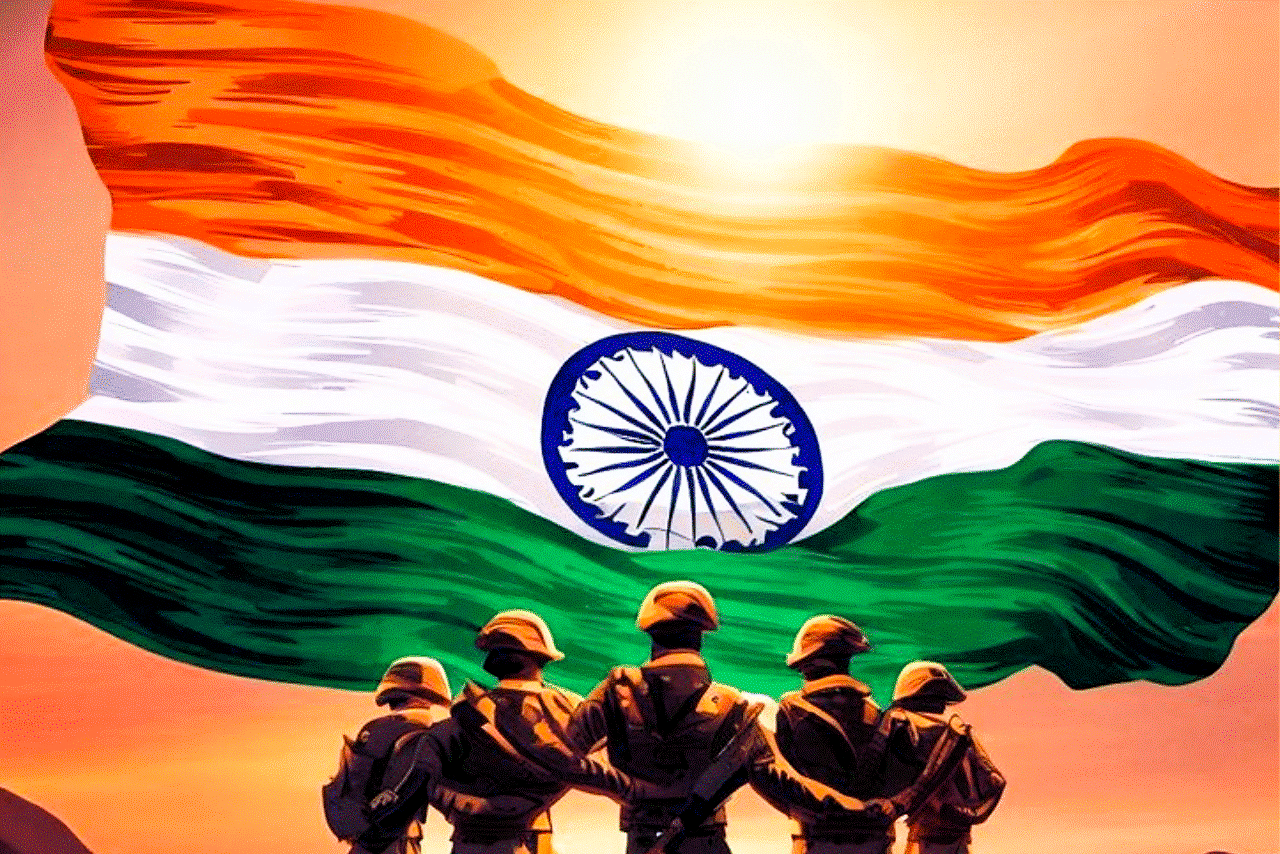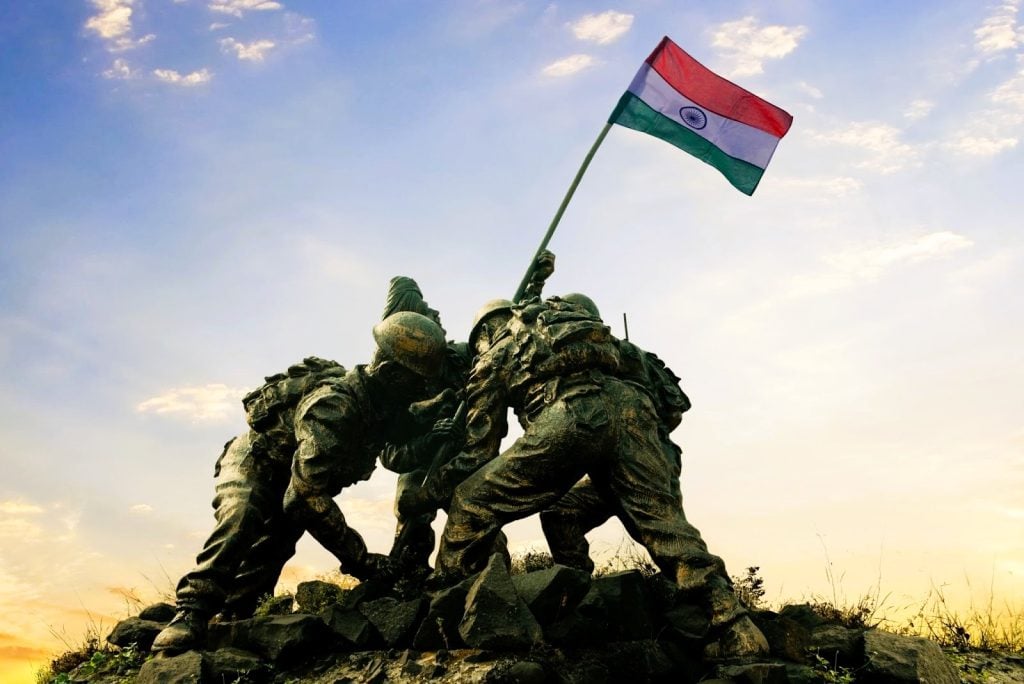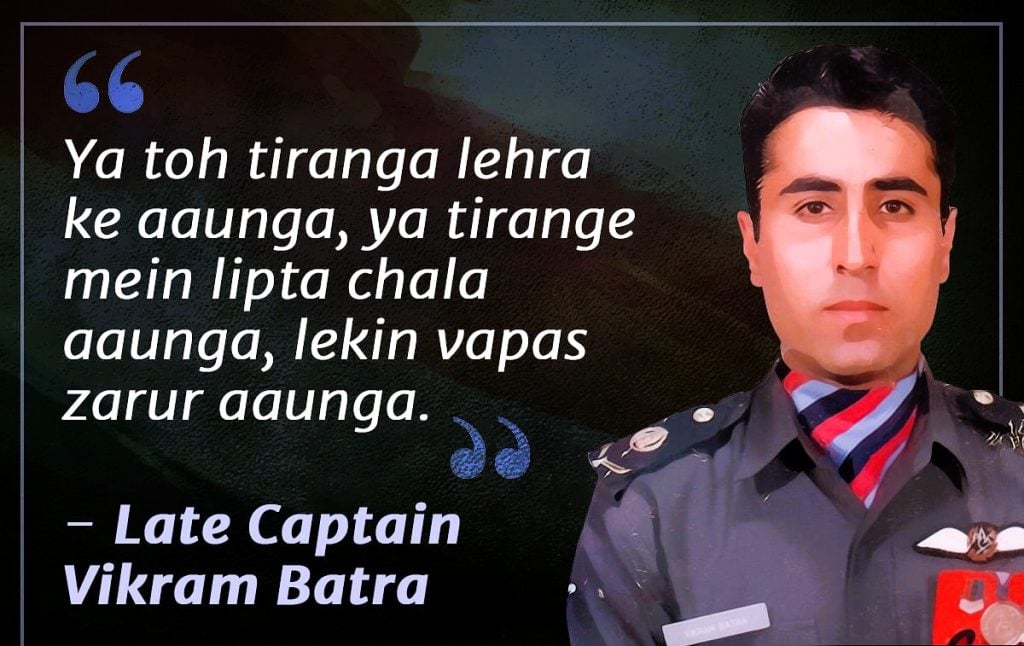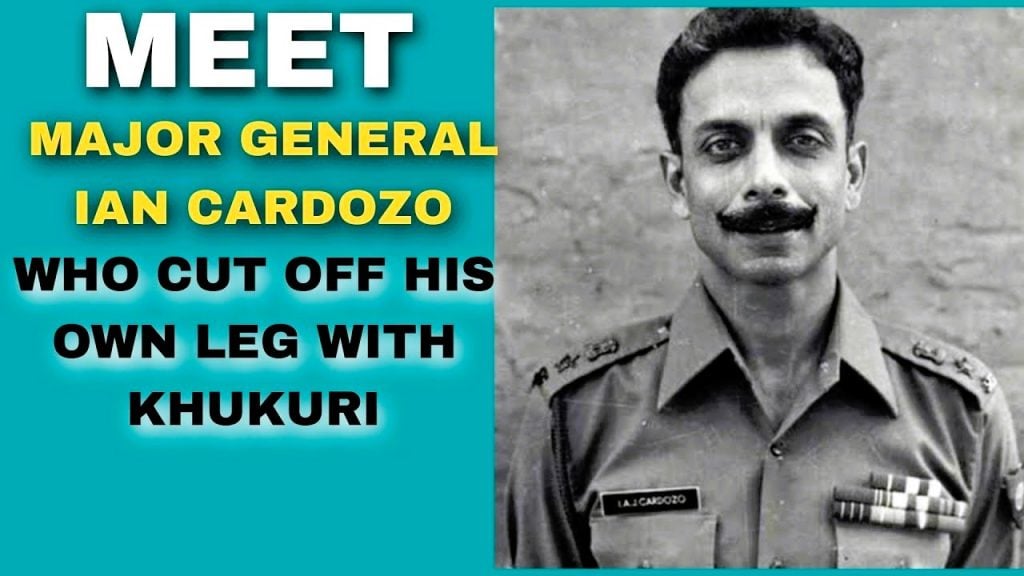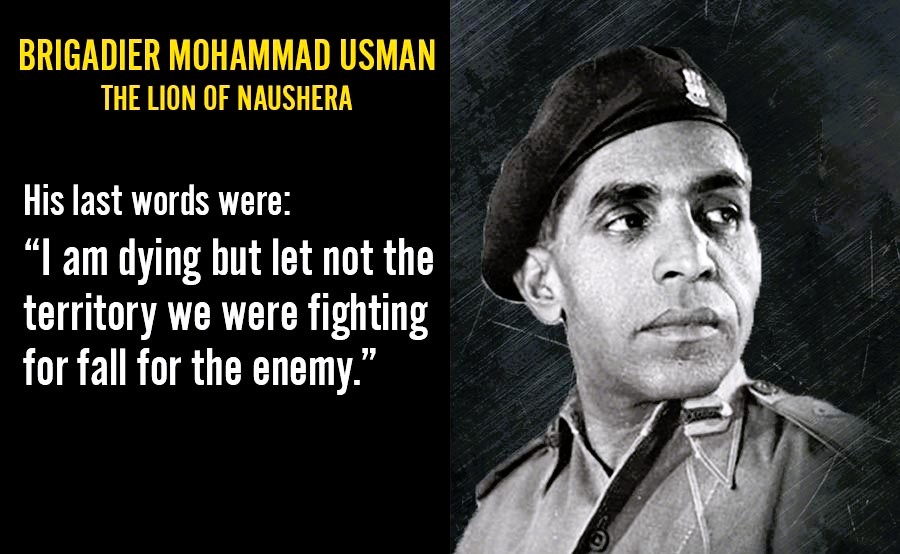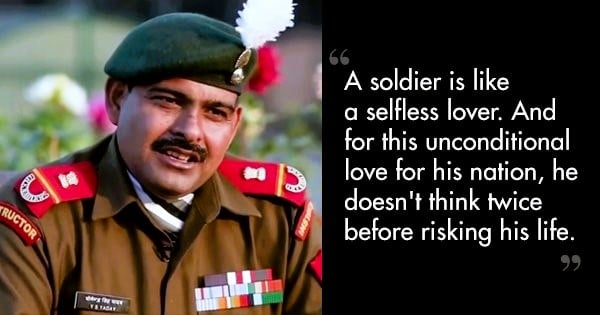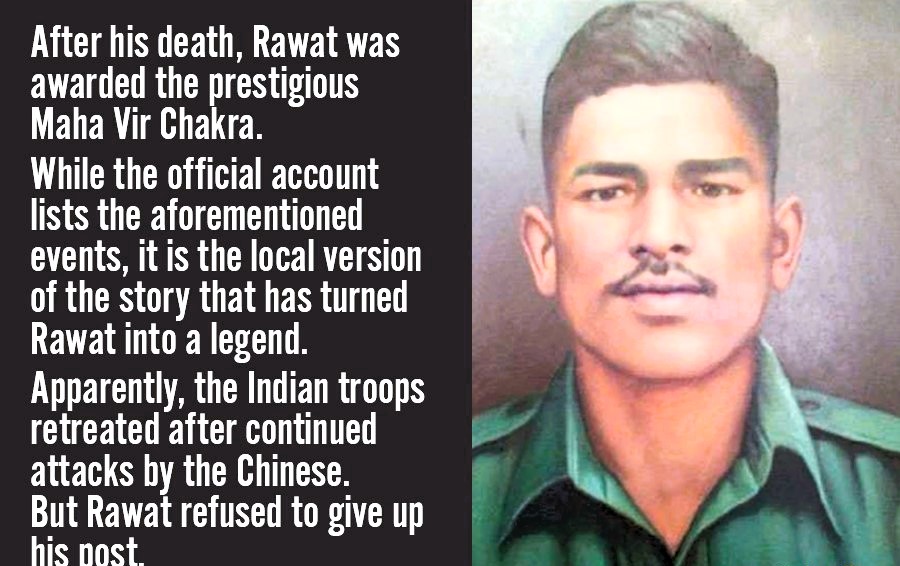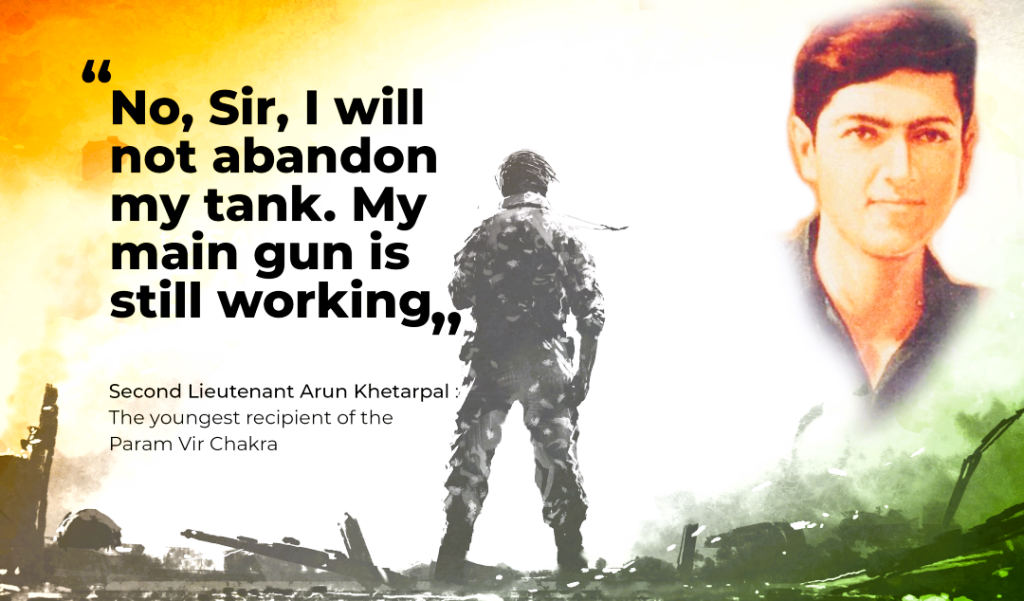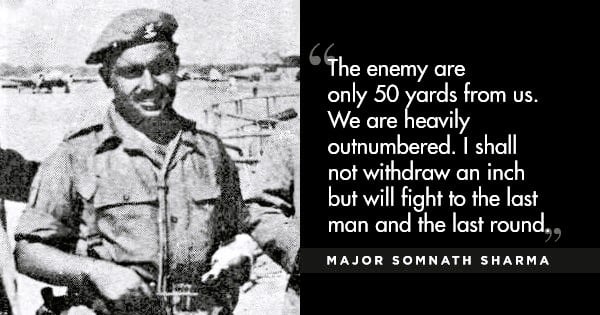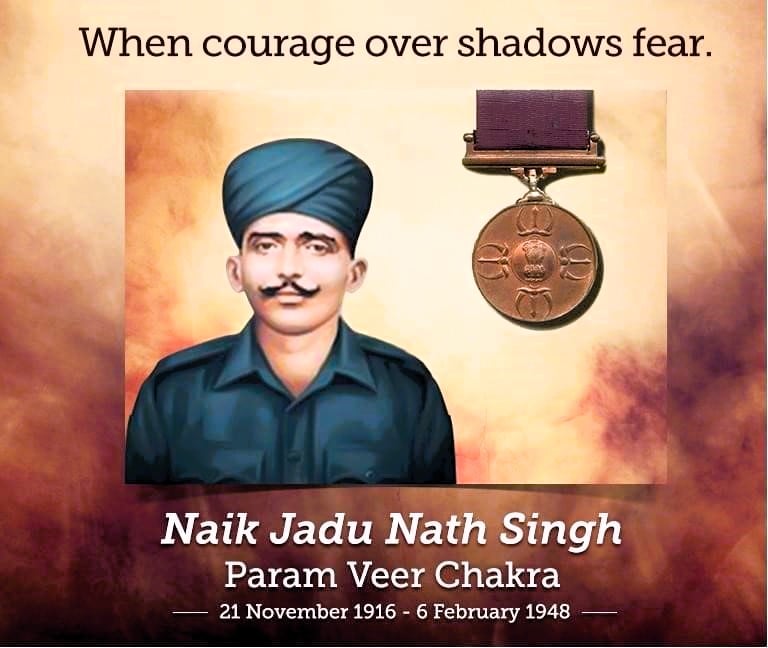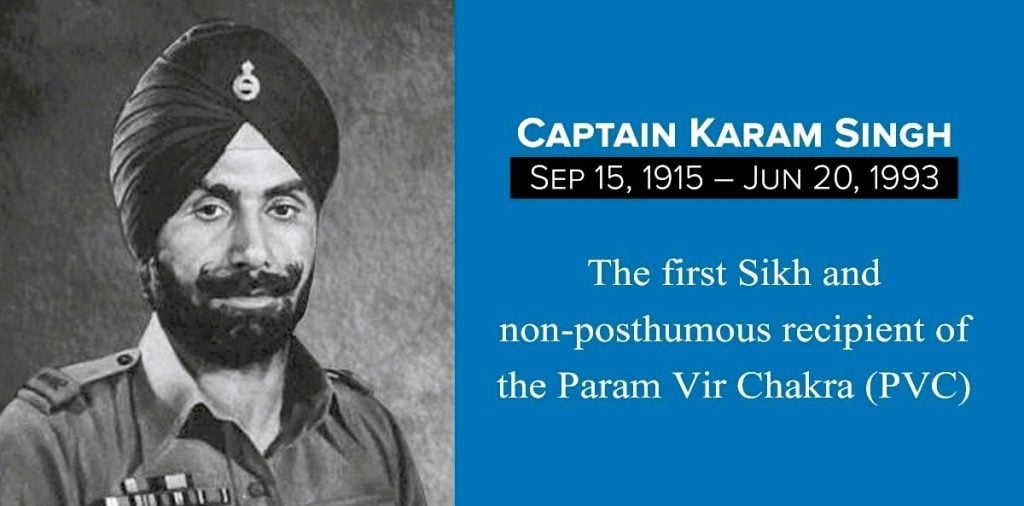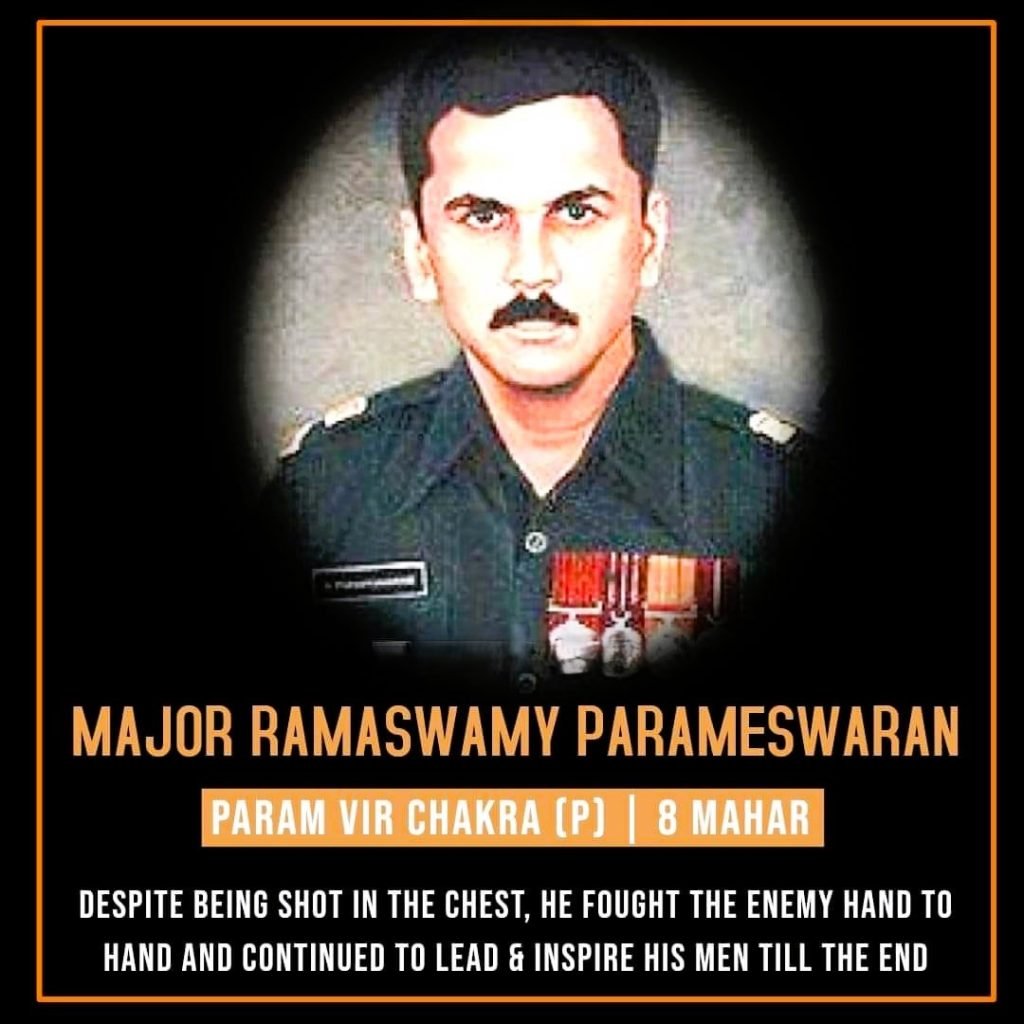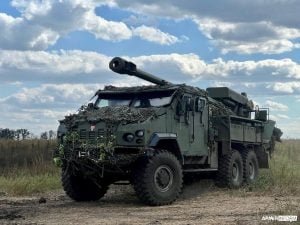The annals of the Indian Army are replete with tales of extraordinary courage, selfless sacrifice, and unparalleled bravery. These brave soldiers of Indian Army, hailing from diverse backgrounds, have etched their names in the pages of history through their unwavering commitment to protecting the nation and its people, often at the cost of their own lives. Their stories of valor and heroism transcend the boundaries of time and space, inspiring generations of Indians to follow in their footsteps and uphold the proud traditions of the Indian Armed Forces.
1. Captain Vikram Batra: The “Sher Shah” of Kargil
Born in the picturesque town of Palampur, Himachal Pradesh, Captain Vikram Batra of the 13th Jammu and Kashmir Rifles was a true embodiment of the warrior spirit. During the Kargil War, he led one of the most arduous military operations in the history of Kashmir, earning the moniker “Sher Shah” (Lion King) from the Pakistani army for his relentless determination and tactical brilliance. Batra’s crowning achievement was the recapture of the strategically crucial Peak 5140, situated at an altitude of 17,000 feet.
Despite sustaining severe injuries, he continued to engage the enemy in close combat, ultimately eliminating three of them. Tragically, Batra’s life was cut short during the mission to capture Peak 4875, but his final words, “Jai Mata Di,” have become a rallying cry for the nation, forever etching his name in the annals of Indian military history.
10 Powerful Air Forces In The World 2024
2. Major General Ian Cardozo: The Indomitable Spirit
Major General Ian Cardozo’s story is a testament to the unbreakable spirit of the Indian soldier. During the Indo-Pakistani War of 1971, Cardozo, then a young major with the 5th Gorkha Rifles, stepped on a landmine and suffered a grievous injury to his leg. When the doctor was unable to amputate the limb, Cardozo took matters into his own hands, literally, and used a Gorkha knife to cut off his own leg, uttering the now-famous words, “Now go and bury it!” This act of sheer grit and determination did not deter Cardozo from continuing to serve his country. He went on to become the first disabled officer in the Indian Army to command an infantry battalion and a brigade, defying all odds and setting an inspirational example for his fellow soldiers.
3. Brigadier Mohammad Usman: The “Lion of Naushera”
Hailing from the small town of Bibipur in Uttar Pradesh, Brigadier Mohammad Usman was a true giant among the ranks of the Indian Army. During the Indo-Pakistani War of 1947-48, Usman played a pivotal role in repelling a fierce attack on the strategic locations of Naushera and Jhangar in Jammu and Kashmir, earning him the moniker “The Lion of Naushera” from his fellow soldiers. Even at the time of Partition, when Usman was offered the prestigious position of Chief of the Pakistani Army, he chose to remain loyal to India, leaving the Baloch regiment and joining the Dogra regiment instead. Sadly, Usman’s life was cut short on July 3, 1948, as he defended the town of Jhangar, but his last words, “I am dying but let not the territory we were fighting for fall to the enemy,” have become a rallying cry for the Indian Armed Forces.
4. Subedar Yogendra Singh Yadav: The Youngest Param Vir Chakra Awardee
Born in 1980 in Aurangabad Ahir village, Uttar Pradesh, Subedar Yogendra Singh Yadav holds the distinction of being the youngest recipient of the Param Vir Chakra, India’s highest military decoration. During the Kargil War in 1999, Yadav volunteered for the perilous task of capturing three strategic enemy bunkers on Tiger Hill, situated at an altitude of 16,500 feet. Despite being hit by three bullets in his groin and shoulder, Yadav continued his ascent, eventually reaching the top of the cliff and neutralizing the first enemy bunker with a well-placed grenade. Undeterred by his injuries, Yadav went on to destroy the second bunker as well, engaging in hand-to-hand combat with the enemy and killing four Pakistani soldiers. Yadav’s heroic actions turned the tide of the battle, paving the way for the Indian Army’s capture of the strategically crucial Tiger Hill.
5. Rifleman Jaswant Singh Rawat: The Immortal Sentinel of Nuranang
The story of Rifleman Jaswant Singh Rawat is one that defies the boundaries of human endurance and courage. During the 1962 Indo-China War, Rawat, of the 4th Garhwal Rifles Infantry Regiment, was ordered to evacuate his post at Nuranang, along with his fellow soldiers, due to the heavy casualties suffered against the Chinese forces. However, Rawat refused to abandon his position and continued to fight, aided by two Monpa tribal girls, Sela and Nura. For three days, the trio maintained a relentless barrage of fire, fooling the Chinese into believing they were facing a large battalion. When the enemy eventually discovered the truth, Rawat chose to take his own life rather than be captured, earning him the Maha Vir Chakra posthumously. Today, the post Rawat defended is known as Jaswant Garh, and a small shrine has been erected in his honor, where every passing army personnel pays their respects to this legendary soldier.
6. Second Lieutenant Arun Khetarpal: The Braveheart of Basantar
Born in Pune, Second Lieutenant Arun Khetarpal of the 17th Poona Horse regiment was only 21 years old when he made the ultimate sacrifice for his country during the Indo-Pakistani War of 1971. In the Battle of Basantar, Khetarpal displayed remarkable courage and determination as he rushed to aid his comrades, overrunning the enemy’s defenses with his tanks and capturing Pakistani infantry and weapons. Even after his commanding officer was killed, Khetarpal continued to fight fiercely, destroying one enemy tank and managing to hit 10 more before succumbing to his own injuries. Khetarpal’s actions earned him the Param Vir Chakra posthumously, solidifying his place as a true hero in the annals of the Indian Army.
7. Major Somnath Sharma: The First Recipient of the Param Vir Chakra
Major Somnath Sharma of the Fourth Kumaon regiment was just 24 years old when he made the ultimate sacrifice for his country. On October 30, 1947, Sharma’s company was airlifted to Srinagar to fight against Pakistani invaders, and on November 3, they found themselves surrounded by a tribal lashkar of 700 raiders. Despite being outnumbered seven to one, Sharma refused to back down, running from post to post to encourage his men to fight. With his left hand in a plaster cast from a previous injury, Sharma took to filling the magazines for the light machine guns, until a mortar shell exploded near him, killing him instantly. Sharma’s last message to Brigade HQ, “The enemy is only 50 yards from us. We are heavily outnumbered. We are under devastating fire. I shall not withdraw an inch but will fight to our last man and our last round,” cemented his legacy as the first recipient of the Param Vir Chakra.
10 Powerful Countries In The World 2024
8. Naik Jadu Nath Singh: The Valiant Defender of Taindhar
Naik Jadu Nath Singh, the fourth recipient of the Param Vir Chakra, demonstrated extraordinary bravery and presence of mind during the Indo-Pakistani War of 1947-48. On February 6, 1948, Singh was in command of a forward post at Taindhar, with only nine men under his charge. When the Pakistanis launched a series of attacks to capture the post, Singh displayed exceptional leadership, using his small force to repel the enemy’s advances not once, but thrice. Even when all his men, including himself, were wounded, Singh took over the Bren gun and continued to fight, surprising the enemy with his sheer determination. Tragically, Singh succumbed to his injuries, but not before he had secured the post and dealt a devastating blow to the Pakistani forces.
9. Subedar Karam Singh: The First Non-Posthumous Param Vir Chakra Awardee
Hailing from the Sangrur District of Punjab, Subedar Karam Singh holds the distinction of being the first non-posthumous recipient of the Param Vir Chakra. On October 13, 1948, during the Indo-Pakistani War, Singh’s platoon came under a fierce brigade-level attack by the Pakistani forces at Richhmar Gali in Kashmir. With his communication lines cut off and most of his bunkers destroyed, Singh was left with no choice but to fight the enemy head-on with whatever resources he had. Despite sustaining severe injuries, Singh refused to evacuate the post and instead jumped out of his trench, stabbing two intruding enemy soldiers to death. His brave actions demoralized the Pakistani forces, forcing them to abandon the attack.
10. Major Ramaswamy Parameswaran: The Fearless Warrior of Sri Lanka
Born in Mumbai, Maharashtra, Major Ramaswamy Parameswaran was a true embodiment of the Indian Army’s fighting spirit. In 1987, during India’s peacekeeping operations in Sri Lanka, Parameswaran’s column was ambushed by a group of militants. Instead of panicking, Parameswaran displayed remarkable presence of mind, encircling the enemy from the rear and launching a surprise attack. In the ensuing hand-to-hand combat, Parameswaran was shot in the chest, but undeterred, he snatched the rifle from the militant and shot him dead. Even as he was barely able to stand, Parameswaran continued to give orders to his men, inspiring them to fight until his last breath. Parameswaran’s actions resulted in the death of five militants and the recovery of three rifles and two rocket launchers, earning him the Param Vir Chakra posthumously.
6 Toughest Special Forces Fitness Tests in the World 2024
Conclusion
The stories of these brave soldiers of the Indian Army stand as shining beacons of courage, sacrifice, and unwavering patriotism. Their extraordinary feats of valor, selflessness, and determination have not only secured the nation’s borders but have also inspired generations of Indians to follow in their footsteps. These heroes, who have laid down their lives for the motherland, will forever be remembered as the true guardians of India’s freedom and sovereignty. Their legacies serve as a constant reminder that the spirit of the Indian soldier is indomitable, and that the nation’s security is in the hands of the bravest of the brave.
FAQs
1. Who are the brave soldiers of the Indian Army?
The brave soldiers of the Indian Army are dedicated military personnel who serve to protect India’s sovereignty and territorial integrity. They are known for their courage, discipline, and commitment to duty.
2. What are some notable achievements of Indian soldiers?
Indian soldiers have achieved numerous feats, including victories in wars (such as the 1971 Indo-Pak War), successful counter-insurgency operations, peacekeeping missions under the UN, and humanitarian assistance during natural disasters.
3. How does the Indian Army honor its brave soldiers?
The Indian Army honors its brave soldiers through various military awards and decorations, such as the Param Vir Chakra, Maha Vir Chakra, and Vir Chakra, which recognize acts of valor and gallantry in the face of the enemy.
4. What training do Indian soldiers undergo?
Indian soldiers undergo rigorous training at various military academies, such as the Indian Military Academy (IMA) and the Officers Training Academy (OTA). Their training includes physical fitness, weapons handling, tactical exercises, and leadership development.
5. Can you name some famous Indian soldiers?
Some famous Indian soldiers include Captain Vikram Batra, Subedar Major Yogendra Singh Yadav, Captain Manoj Kumar Pandey, and Major Sandeep Unnikrishnan. They are celebrated for their extraordinary bravery and sacrifice.
